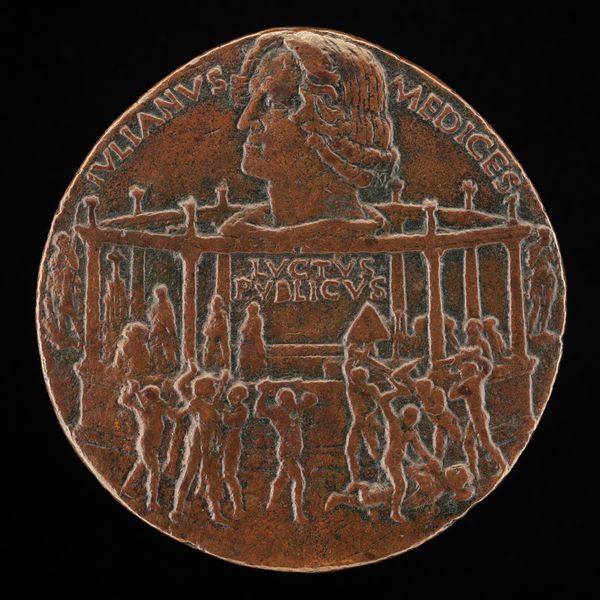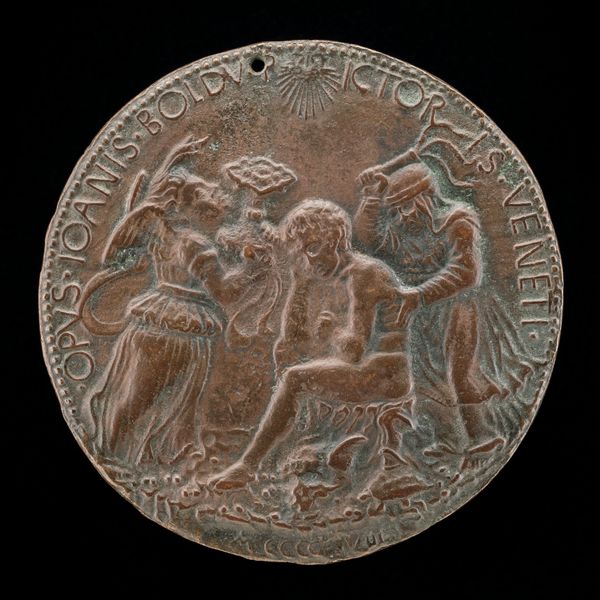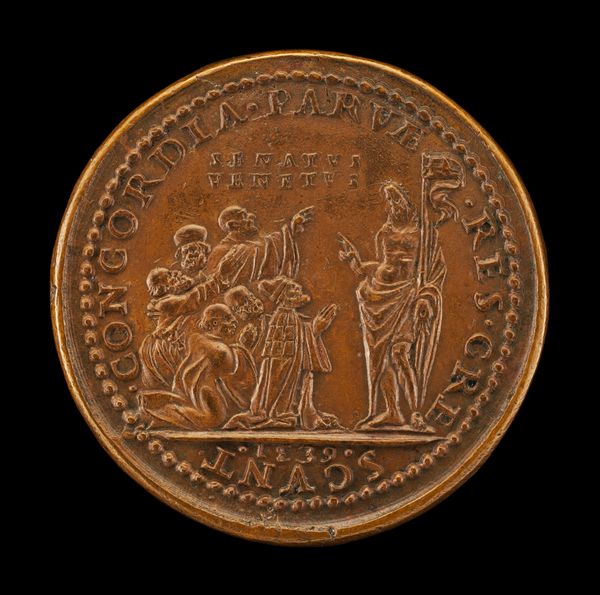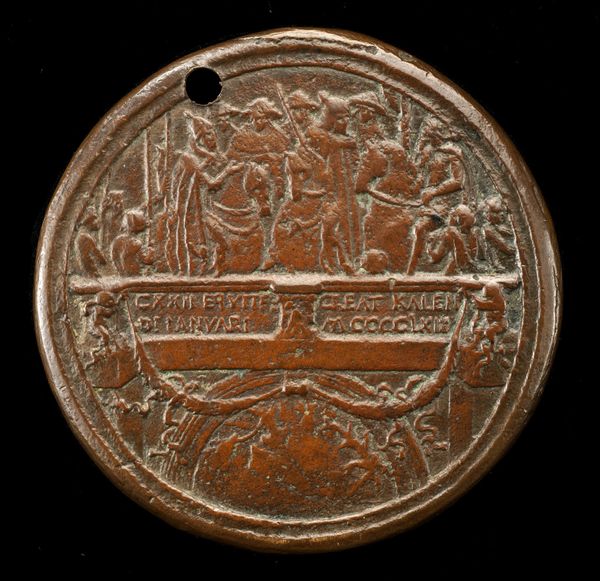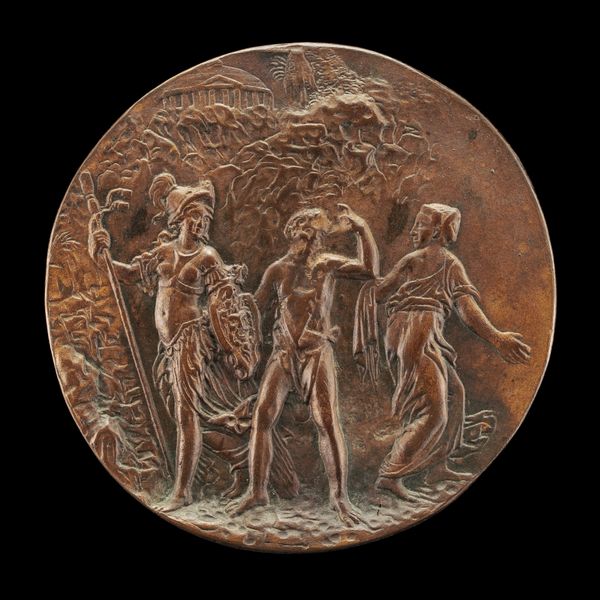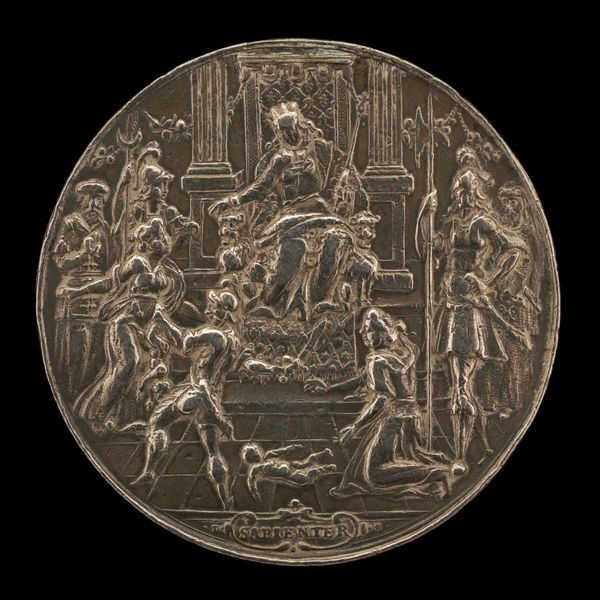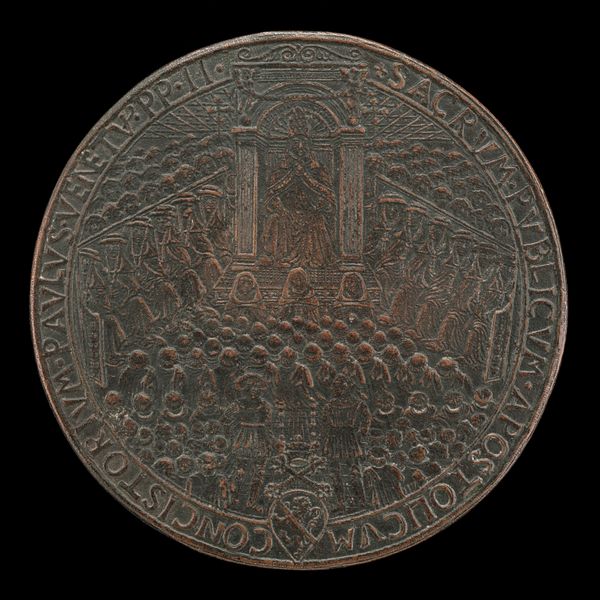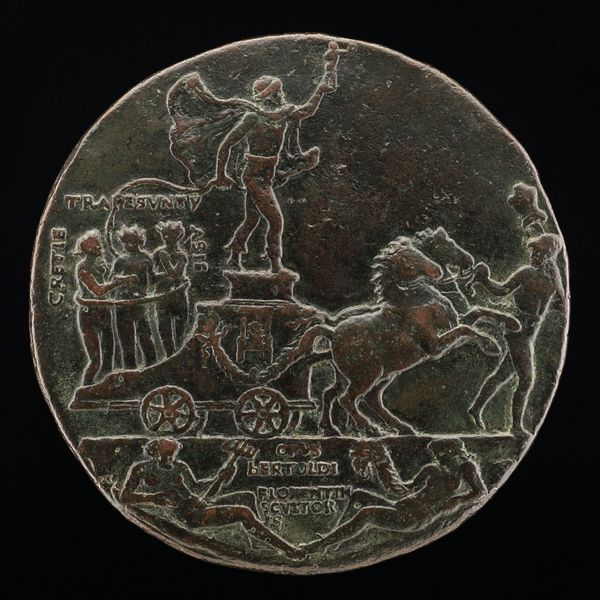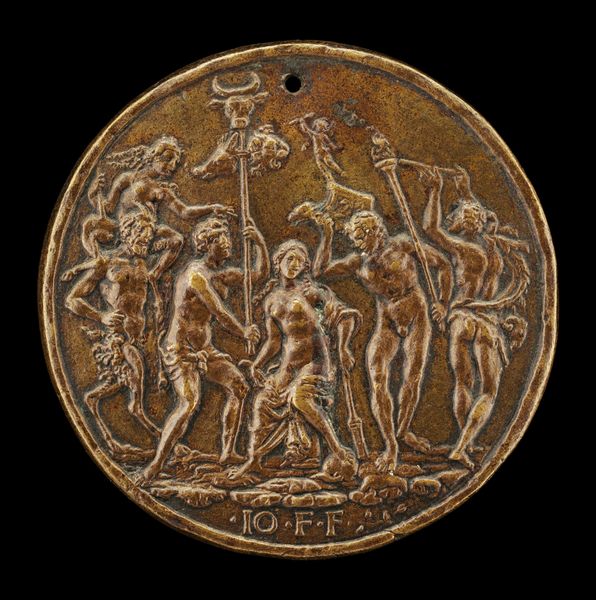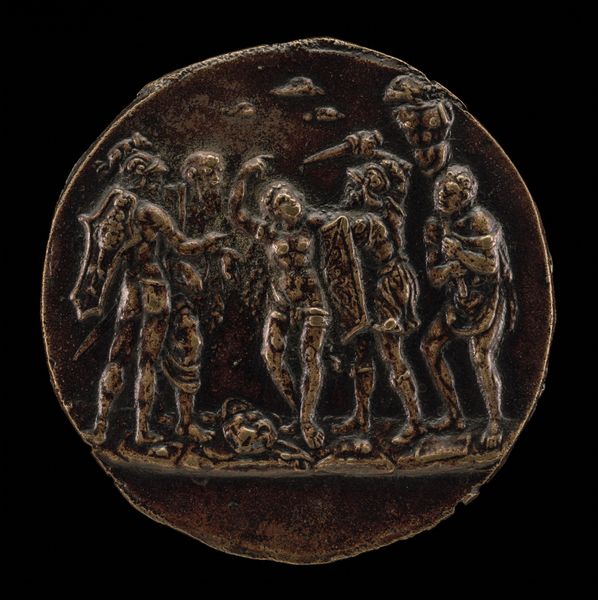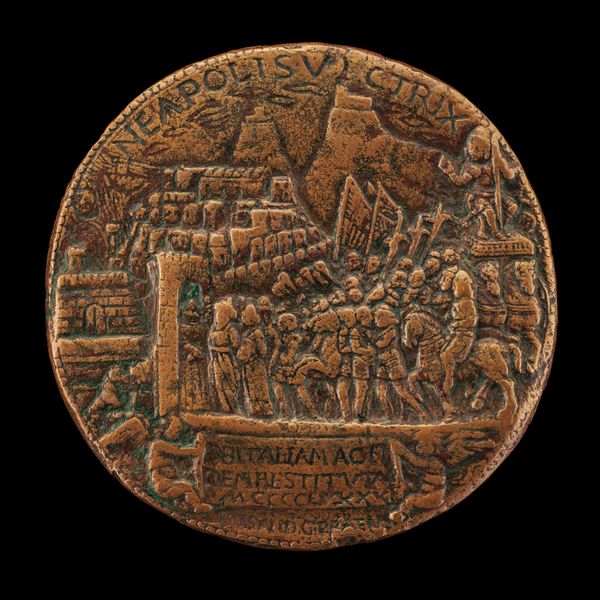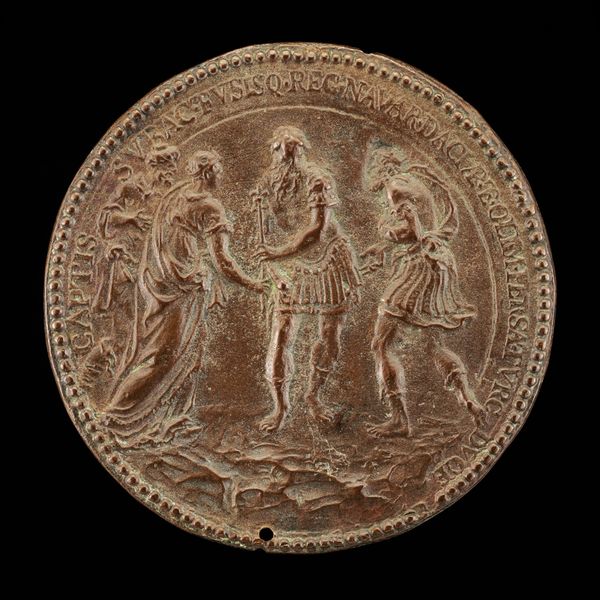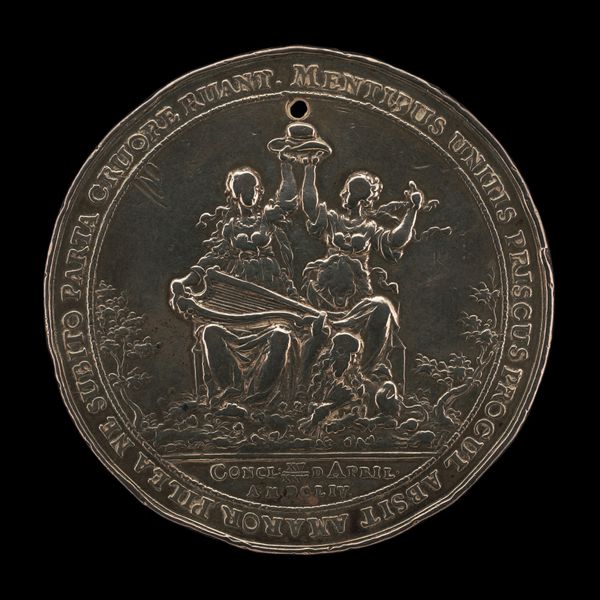![The Murder of Giuliano I de' Medici (The Pazzi Consiracy Medal) [reverse] by Bertoldo di Giovanni](/_next/image?url=https%3A%2F%2Fd2w8kbdekdi1gv.cloudfront.net%2FeyJidWNrZXQiOiAiYXJ0ZXJhLWltYWdlcy1idWNrZXQiLCAia2V5IjogImFydHdvcmtzL2Q4Yjk0MDRiLTgzYjYtNDU1Mi1hMzQzLTk3ZTM4NWUwYWYwNC9kOGI5NDA0Yi04M2I2LTQ1NTItYTM0My05N2UzODVlMGFmMDRfZnVsbC5qcGciLCAiZWRpdHMiOiB7InJlc2l6ZSI6IHsid2lkdGgiOiAxOTIwLCAiaGVpZ2h0IjogMTkyMCwgImZpdCI6ICJpbnNpZGUifX19&w=3840&q=75)
The Murder of Giuliano I de' Medici (The Pazzi Consiracy Medal) [reverse] 1478
0:00
0:00
relief, bronze, sculpture
#
medal
#
sculpture
#
detailed texture
#
relief
#
bronze
#
sculpture
#
history-painting
#
italian-renaissance
Dimensions: overall (diameter): 6.6 cm (2 5/8 in.) gross weight: 77.48 gr (0.171 lb.) axis: 12:00
Copyright: National Gallery of Art: CC0 1.0
Curator: Isn't it something? This is the reverse side of "The Murder of Giuliano I de' Medici," also known as the Pazzi Conspiracy Medal, cast in bronze by Bertoldo di Giovanni in 1478. The obverse depicts a profile bust of Giuliano. But this… Editor: It’s like looking into a fever dream distilled into metal. The scene is brutal – bodies being attacked, the figures raw with primal energy – yet framed with classical columns and Latin inscriptions. It’s such a fascinating dichotomy, horrifying and sophisticated all at once. Curator: Precisely. That stark contrast between classical aspirations and visceral violence is so telling. Notice the head of Giuliano above the chaos, almost detached. His death in the Florence Cathedral, during High Mass, was a brazen act of political maneuvering that shocked Europe. This medal commemorates it but with a classical veneer attempting to impart, perhaps, a tragic nobility to a rather sordid affair. The inscription above reads "LVCTUS PUBLICUS" signifying a period of national mourning. Editor: It's the bodies on the lower half of the scene for me though. All piled up, brutalised, with small figures raining blows down upon them – the pure rage of the figures depicted feels really immediate. Curator: This work embodies so much about the Renaissance fascination with antiquity and simultaneous plunge into political intrigue and ruthless ambition. Editor: It feels like a kind of therapy, actually. Pouring out all the chaos of the era in this bas-relief and containing it, pinning it to the bronze like an insect on display. What kind of impact did such propaganda have? Did they throw it around during the Republic? Curator: Interesting question. Coins and medals like this circulated amongst political elites and affirmed support – they were, in essence, miniature billboards of the Renaissance. This medal probably circulated soon after the event as a political statement. Editor: There’s something timeless in the rawness here though. The mob mentality captured in bronze transcends its historical moment, even now it carries that same kind of dread. Curator: Well, that's the magic of symbolic imagery, isn't it? History finds its way of looping and resonating. This medal speaks to those darker potentials we share throughout history, I believe. Editor: Agreed, that's a heavy weight for such a small thing to carry. Makes you think differently about what these things can hold, you know? The things we still want to, maybe need to, express.
Comments
No comments
Be the first to comment and join the conversation on the ultimate creative platform.
